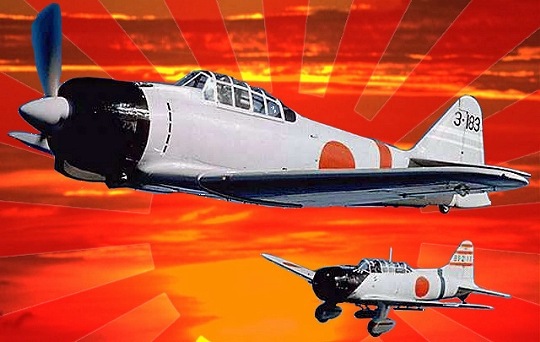Born on October 12, 1919, Doris "Dorie" Miller (October 12, 1919 - November 24, 1943) became the first African American to receive the Navy Cross. Miller received this distinction for his act of bravery during Pearl Harbor.
 |
| discoverhawaiitours.com |
Dorie Miller was the son of sharecroppers Connery and Henrietta Miller. He attended high school in Waco, Texas, and played fullback on the varsity football team. He was expelled from school due to fighting over racial insults directed at him. Dorie Miller enlisted in the United States Navy in 1939 where he became a Mess Attendant, Third Class. A Mess attendant prepares and serves food, and cleans for the sailors. Miller joined the Navy because he wanted to see the world. He was assigned to the USS West Virginia Battleship.
Miller had temporary duty on the USS Nevada battleship, and while there was sent to Battery Gunnery School. Miller returned to the USS West Virginia and became a heavyweight boxing champ in West Virginia, weighing in at 6'3'', 200 lbs. The sailor was then promoted to Cook, Third Class.
When Pearl Harbor was under attack, Miller's battleship was bombarded by Japanese strikes. Because of his size and girth, Miller was instructed to transport the injured shipmates to the quarterdeck* for safety. He was also ordered to assist the ship's captain, who was wounded in his abdomen by shrapnel. Captain Meryvn Bennion refused to abandon his post and ended up dying.
Miller's next instructions were to load the .50 caliber anti-aircraft machine guns. He went beyond the call of duty and ended up firing at approaching Japanese planes. The Cook had now assumed a combative role. With the heavy damage inflicted on the USS West Virginia, the ship was sinking and Miller assisted with the evacuations.
His feats became publicized and the nation became aware of this "Colored soldier's" actions. Of the 1,541 men on the West Virginia, 130 were killed and 52 wounded. Nine Japanese torpedoes struck the USS West Virginia ship, stationed in Pearl Harbor.
Senators James N. Mead (D-NY) recommended that Dorie Miller receive the Congressional Medal of Honor. John D. Dingell, Sr. (D-MI) did the same. The Pittsburgh Courier began a petition to send Milller to the Naval Academy. Many of the sailors received promotions after the attack; Miller did not.
The high ranking official who was against awarding Miller a Medal of Honor was Secretary of Navy Frank Knox. Knox believed that Miller did not deserve it. It was President Franklin D. Roosevelt who approved the awarding of the highest medal awarded in the Navy, the Navy Cross. Dorie Miller received the Navy Cross on May 27, 1942 by Admiral Chester Nimitz.
 |
| Source: maritimetexas.net Admiral Nimitz reading the citation before awarding the Navy Cross to Miller. |
Remarked Admiral Nimitz:
This marks the first time in this conflict that such high tribute has been made in the Pacific fleet to a member of his race and I'm sure that the future will see others similarly honored for such brave acts.
Admiral Nimitz's words did prove true. The Montford Point Marines received their Congressional Medal of Honor. In 2012. So Dorie Miller became the first African American to receive a Navy Cross for his heroism during Pearl Harbor. He had speaking engagements for war bonds and the Negro Press highlighted his deeds.
After the attack Miller was assigned to the USS Indianapolis and then the Liscome Bay. On November 24, 1943, off the Butaritan** Islands in the Pacific, Japanese torpedos struck the Liscome, sinking the ship. Dorie Miller's body was never found.
In 1973, the United States Navy commissioned a new frigate called the USS Milller. To name a vessel after a cook was monumental. The late civil rights icon, Congresswomen Barbara Jordan (D-TX) was the guest speaker for the commissioning of the USS Miller. The ship saw active duty throughout the world until 1991. In 1995 the US sold the ship to Turkey who used it for parts and target practice until it sunk the ship in 2001.
 |
| Congresswoman Barbara Jordan She was a civil rights and political icon. Source:lbjlib.utexas.edu |
Schools, housing and a US postal stamp in 2010 have been dedicated in honor of Dorie Miller's actions. The 2001 Pearl Harbor motion picture featured Academy Award winning actor Cuba Gooding, Jr. in the role of Miller. Miller, like the Montford Point Marines, has a ship dedicated to World War II heroism. He was the first African American to receive a Navy Cross for his actions during Pearl Harbor.
 |
| Source: Johnnywesthouse.com WWII era Navy Cross |
 |
| Source: Ussmillerde1091.com |
*quarterdeck- upper deck of a ship, usually reserved for the officers
**Butaritan is located directly north of the Equator, not too far from the Marshall Islands in the Micronesian Region. It is part of the Gilbert Islands.
Sources:
http://www.history.navy.mil/faqs/faq57-4.htm
http://bjordanarchives.blogspot.com/2011/11/veterans-day-2011-and-dorie-miller.html
http://www.greatblackheroes.com/government/doris-miller/
http://www.nationalgeographic.com/pearlharbor/ngbeyond/people/



















.jpg)


